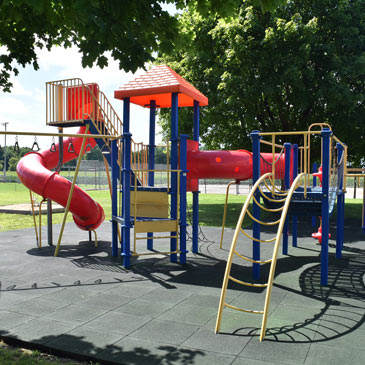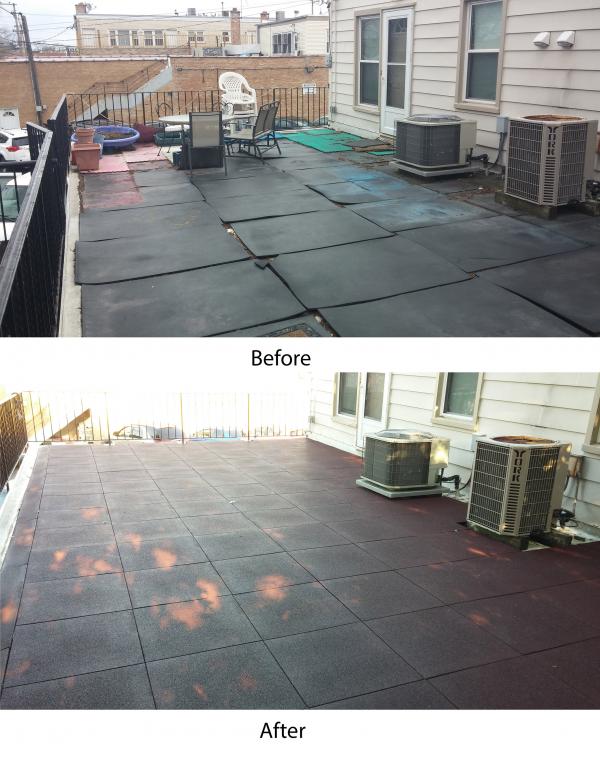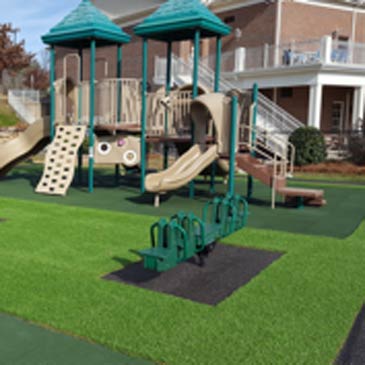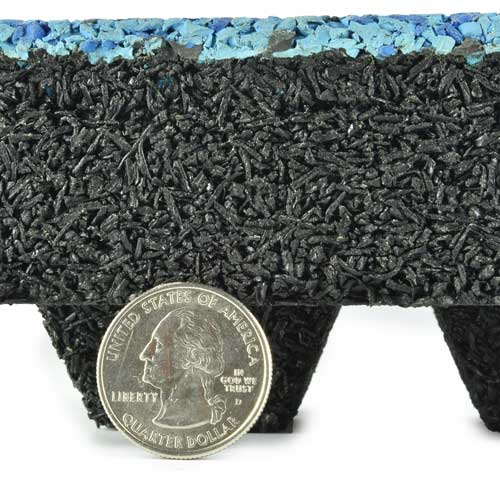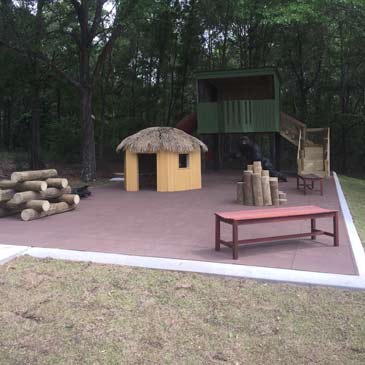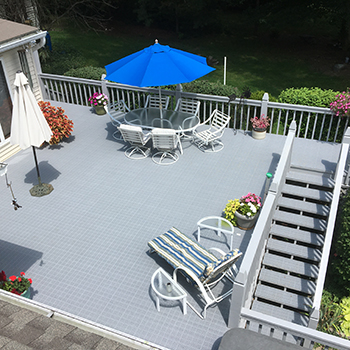Patio Tiles Customer Stories
Outdoor Patio Tiles Guide
Patio Flooring Blogs, Videos and Testimonials
Discover all there is to know about Patio Flooring with this ever growing knowledge base of options, ideas, instructions, videos and patio tile testimonials.
Patio Flooring Blogs, Videos and Testimonials
When you’re creating the perfect outdoor space at home or at a business, it’s important to pick the perfect outdoor furniture and accessories to match the activities that will be occurring. Along with those items, you’ll want to spend some time finding the perfect patio tiles too.
The best outdoor floor will add style, cushioning, and traction to your patio, making this an area where you and your family will want to spend a lot of time.
Multiple types of patio tiles are available. Continue reading for some help in finding just the right model for your needs at the right cost.
Must-have features. Because patio tiles will be used outdoors, they need to stand up to any weather situation in your area. The materials should be UV-treated, meaning they will not fade or crack when exposed to regular sunlight.
If you want a type of tile that can be used at any time of the year, you’ll want materials that can handle temperatures below freezing as well as survive hot summer weather.
Additionally, the flooring needs to be waterproof. If the tiles soak up water, they will encourage the growth of mold and mildew, leading to a shorter lifespan and the formation of odors, in addition to health and safety concerns.
Many customers like interlocking patio tiles, as they look great and can be installed easy. If you select a type of tile that you can lay out as a DIY installation, you’ll end up saving quite a bit of money versus having a professional install them.
Perforated tiles. A tile with perforations in it is handy to use over concrete, over wood, or over grass. The holes run through the entire thickness of the material, allowing water to drain without pooling on the surface.
Even with holes in the tile, this design still offers plenty of durability. It will stand up to constant foot traffic, and it often can have patio furniture placed over the top of it.
Perforated tiles are a popular choice for a patio area that also has a pool or a hot tub nearby. Water that splashes out of the pool can drain through the perforations.
The surface of the perforated tile will have a slight texture to it, providing you with a sure footing, even when conditions are wet. Flexible PVC is a common construction material in the perforated design.
Solid surface tiles. In patio areas where you’re not as concerned about water drainage, a solid surface tile will work nicely. In these cases having a proper slope to your subsurface will be critical for drainage.
A solid surface tile can consist of PVC plastic, rubber or a foam/rubber blend. All have multiple color options and excellent durability.
Rubber pavers. You can cover a wood deck or a cement area with rubber patio tiles. If you have a dining area on your patio, using rubber is a nice choice, as it’s easy to clean after everyone eats.
Rubber has some cushioning properties, so it’s going to give you a much higher level of comfort versus wood or hard cement. The rubber surface also provides a sure footing for people walking in the area. And unlike foam rubber blends, rubber will stand up to high heels and the nails of pets without showing damage.
Although rubber flooring commonly has an all-black color, patio tiles consisting of rubber may offer some other colors, such as gray, green, tan, or brick red. For an outdoor area that’s exposed to sunlight, a non-black color of rubber won’t heat up as much as black tiles, which is nice for walking with bare feet.
Artificial turf. If you like the look of green grass in an outdoor space, consider artificial turf for patios. The surface will resemble real grass and will feel incredibly soft under your feet, helping you create a relaxing and comfortable outdoor flooring.
Patio tiles buying guide. One of the most popular reasons to install this type of outdoor flooring is to use it as a replacement for or way to dress up a worn out wooden surface. As long as the wood frame in the surfaces is safe to use and is sturdy, you can lay the tiles over the top to hide the old-looking wood and give it a fresh new look.
Should you want more information on all of the options you have for this type of outside space flooring, click on the links in our guide. We have plenty of information available in the form of blogs, testimonials, usage ideas, and videos to help you make the best choice.
The best outdoor floor will add style, cushioning, and traction to your patio, making this an area where you and your family will want to spend a lot of time.
Multiple types of patio tiles are available. Continue reading for some help in finding just the right model for your needs at the right cost.
Must-have features. Because patio tiles will be used outdoors, they need to stand up to any weather situation in your area. The materials should be UV-treated, meaning they will not fade or crack when exposed to regular sunlight.
If you want a type of tile that can be used at any time of the year, you’ll want materials that can handle temperatures below freezing as well as survive hot summer weather.
Additionally, the flooring needs to be waterproof. If the tiles soak up water, they will encourage the growth of mold and mildew, leading to a shorter lifespan and the formation of odors, in addition to health and safety concerns.
Many customers like interlocking patio tiles, as they look great and can be installed easy. If you select a type of tile that you can lay out as a DIY installation, you’ll end up saving quite a bit of money versus having a professional install them.
Perforated tiles. A tile with perforations in it is handy to use over concrete, over wood, or over grass. The holes run through the entire thickness of the material, allowing water to drain without pooling on the surface.
Even with holes in the tile, this design still offers plenty of durability. It will stand up to constant foot traffic, and it often can have patio furniture placed over the top of it.
Perforated tiles are a popular choice for a patio area that also has a pool or a hot tub nearby. Water that splashes out of the pool can drain through the perforations.
The surface of the perforated tile will have a slight texture to it, providing you with a sure footing, even when conditions are wet. Flexible PVC is a common construction material in the perforated design.
Solid surface tiles. In patio areas where you’re not as concerned about water drainage, a solid surface tile will work nicely. In these cases having a proper slope to your subsurface will be critical for drainage.
A solid surface tile can consist of PVC plastic, rubber or a foam/rubber blend. All have multiple color options and excellent durability.
Rubber pavers. You can cover a wood deck or a cement area with rubber patio tiles. If you have a dining area on your patio, using rubber is a nice choice, as it’s easy to clean after everyone eats.
Rubber has some cushioning properties, so it’s going to give you a much higher level of comfort versus wood or hard cement. The rubber surface also provides a sure footing for people walking in the area. And unlike foam rubber blends, rubber will stand up to high heels and the nails of pets without showing damage.
Although rubber flooring commonly has an all-black color, patio tiles consisting of rubber may offer some other colors, such as gray, green, tan, or brick red. For an outdoor area that’s exposed to sunlight, a non-black color of rubber won’t heat up as much as black tiles, which is nice for walking with bare feet.
Artificial turf. If you like the look of green grass in an outdoor space, consider artificial turf for patios. The surface will resemble real grass and will feel incredibly soft under your feet, helping you create a relaxing and comfortable outdoor flooring.
Patio tiles buying guide. One of the most popular reasons to install this type of outdoor flooring is to use it as a replacement for or way to dress up a worn out wooden surface. As long as the wood frame in the surfaces is safe to use and is sturdy, you can lay the tiles over the top to hide the old-looking wood and give it a fresh new look.
Should you want more information on all of the options you have for this type of outside space flooring, click on the links in our guide. We have plenty of information available in the form of blogs, testimonials, usage ideas, and videos to help you make the best choice.

